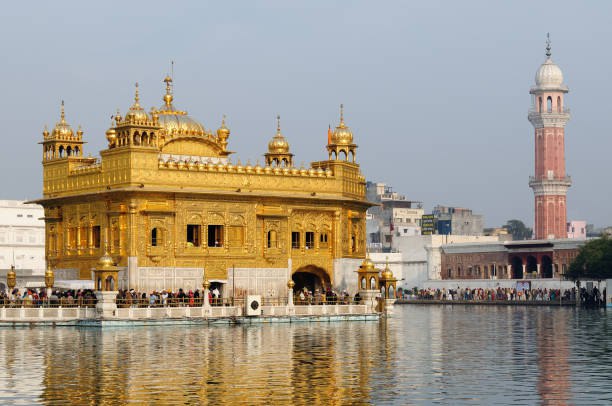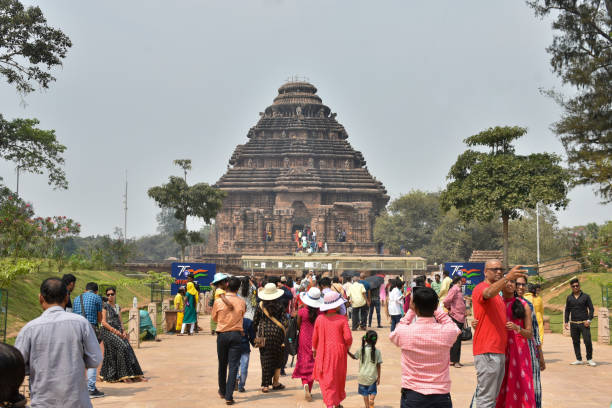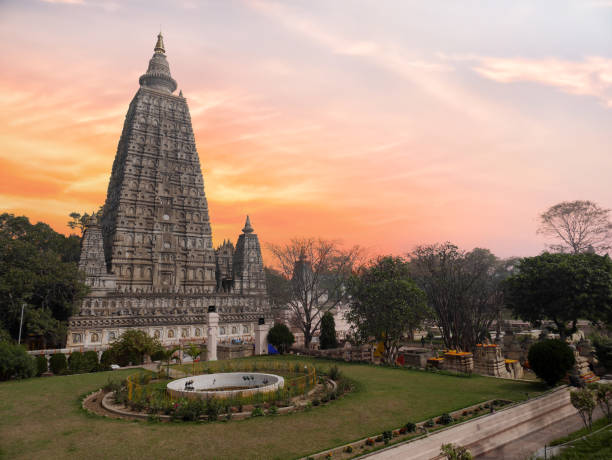Delhi, India, is a city of contrasts—ancient and modern, bustling streets and tranquil corners. Among its vibrant tapestry of cultural landmarks, one structure stands out not just for its beauty but also for the profound message it conveys: the Lotus Temple. A majestic architectural marvel and a beacon of peace, the Lotus Temple is the spiritual home of the Bahá'í Faith and draws millions of visitors from around the world. But beyond its striking form, the Lotus Temple offers a deeper experience: a journey into the heart of unity and inclusivity.
1. A Glimpse into the Bahá'í Faith
The Bahá'í Faith, founded in the 19th century by Bahá'u'lláh, emphasizes the oneness of humanity, the unity of all religious teachings, and the importance of service to others. The faith transcends geographical, cultural, and religious boundaries, advocating for global harmony and understanding. The Lotus Temple is a living representation of this belief, inviting people from all walks of life to come together in prayer, reflection, and contemplation.
2. The Architectural Beauty of the Lotus Temple
Designed by Iranian architect Fariborz Sahba, the Lotus Temple is a marvel of modern architecture. The temple is shaped like a lotus flower, with 27 white marble petals arranged in clusters, symbolizing purity, beauty, and the transcendence of materialistic desires. Its unique structure resembles a blooming lotus amidst lush green gardens, creating an atmosphere of peace and serenity.
As you approach the temple, you can’t help but be struck by the temple’s scale—its large petals rise majestically against the backdrop of the sky. The use of natural materials, including marble, allows the structure to glow in the daylight, and at night, it’s illuminated, standing as a symbol of hope and spiritual enlightenment in the city.
3. An Inclusive Sanctuary for All
One of the most remarkable features of the Lotus Temple is its universal appeal. Unlike many religious spaces, it does not belong to any particular faith, but rather welcomes all people, regardless of their background or beliefs. There are no rituals or ceremonies to attend; instead, the temple serves as a space for quiet reflection, prayer, and meditation. Visitors are encouraged to sit in silence, finding peace in their own hearts.
Inside the temple, the atmosphere is sacred yet welcoming, offering a sanctuary for all who seek to reflect on the larger questions of life. The simplicity of the interior, with its soaring arches and light-filled space, encourages a sense of calm and introspection.
4. The Gardens and Surrounding Area: A Peaceful Escape
The Lotus Temple isn’t just about the building itself—its surrounding gardens are an essential part of the experience. The meticulously manicured grounds offer a peaceful retreat from the bustling city. Visitors can stroll along the pathways, sit on the benches, and take in the sights and sounds of nature. The serene environment makes it easy to disconnect from the noise of daily life and reflect in quiet contemplation.
The temple’s location in Bahapur, Delhi, also places it within reach of some of the city’s other iconic landmarks, such as Humayun’s Tomb, the Qutub Minar, and India Gate. After visiting the Lotus Temple, you can explore these nearby attractions, making for a well-rounded experience of Delhi’s rich history and spiritual diversity.
5. Experiencing Unity in Diversity
What truly makes the Lotus Temple special is its message of unity. The Bahá'í Faith teaches that all religions are fundamentally one, and the Lotus Temple embodies this principle by being open to all. Visitors come from every corner of the globe—Hindus, Muslims, Christians, Buddhists, Sikhs, and others—all seeking a common space for reflection and spiritual renewal.
The temple also regularly holds talks and events that focus on themes of peace, unity, and human rights, providing opportunities for deeper engagement with the Bahá'í teachings. Whether you are a spiritual seeker, a history buff, or simply someone who appreciates beautiful architecture, the Lotus Temple offers an enriching experience that transcends the ordinary.
6. Practical Tips for Visiting the Lotus Temple
- Best Time to Visit: The Lotus Temple is open every day except Monday, with hours from 9 am to 7 pm in the summer and 9 am to 5:30 pm in the winter. To avoid the crowds, it's best to visit early in the morning or later in the evening.
- Dress Modestly: As a place of worship, visitors are asked to dress modestly and respectfully. This means covering shoulders and knees to maintain the sanctity of the space.
- Entry is Free: One of the most appealing aspects of the Lotus Temple is that it is completely free to enter. Donations are welcomed, but not required.
- Guided Tours: While the main experience of the Lotus Temple is introspective, you can also learn more about the Bahá'í Faith and the history of the temple through free guided tours, available at certain times of the day.
7. A Journey of Peace and Reflection
Visiting the Lotus Temple is more than just a sightseeing trip; it’s an invitation to step into a world of peace, unity, and spiritual reflection. Whether you’re seeking solace, wanting to learn more about the Bahá'í Faith, or simply appreciating its architectural beauty, the Lotus Temple provides a rare opportunity to experience a place where all beliefs are embraced and the ideals of global unity are championed.
Plan your trip to the Lotus Temple with the help of skyroutetravel.lk

 Canada
Canada
 India
India






0 comments for this post